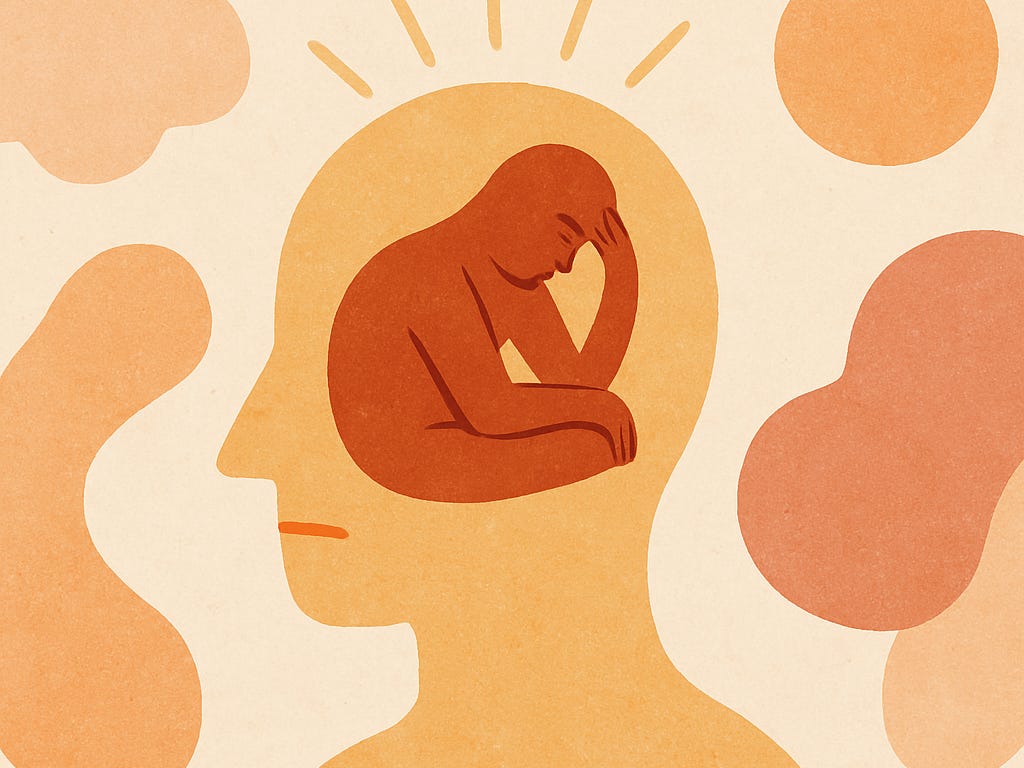The Inner Critic’s Origin Story, Part I
On why we feel shame so deeply, and what evolution and neuroscience reveal about its roots.
We all have that voice—the one that questions our worth and replays our missteps. This three-part series traces the inner critic’s roots through evolution, brain science, and early experience.
In Part I we’ll explore why shame feels so intense and how it evolved to keep us safe.
In every work performance review of my career, buried amidst the praise were always suggestions for improvement or reminders of mistakes.
Despite the positive feedback, I’d fixate on the critical parts. They’d haunt me for days. Sometimes weeks. I’d go into overdrive trying to improve, correct, and scrub these perceived flaws from my identity.
Sound familiar? Probably.
It’s a common human experience: a single critical comment can echo for days, while compliments slip by barely noticed. A tiny misstep can leave us red-faced and rattled.
Shame responses like these aren’t personal flaws. They’re hardwired into our brains because they helped our ancestors survive.
Shame as a Survival Mechanism
Throughout early human history, our survival hinged on belonging.
Being part of a group meant protection, food, cooperation, and safety. Being rejected or cast out wasn’t simply painful—it was potentially fatal.
To support that need for connection, the brain evolved systems to track our behaviour and respond to social cues. Shame became one of those systems—a painful internal signal meant to keep us in line with the group. Its job was to stop us from acting in ways that could lead to exclusion.
In this context, shame was adaptive. It helped us stay in good standing and, ultimately, stay alive.
The Brain’s Social Alarm System: The Role of the Amygdala
The amygdala—a key part of the brain’s fear response—plays a central role in detecting threats, including social ones.
It ramps up fast and hard, helping us prepare for danger. But it’s not great at nuance. It doesn’t distinguish between physical threats and emotional ones. Whether you’re about to be attacked by a predator, or you're afraid of a coworker judging you in a meeting, the amygdala responds with the same urgency.
That’s why shame can feel so intense and overwhelming. To the brain, it’s a threat to safety. Because once upon a time it was.
Shame, Fear, and Anxiety: A Neural Network
Shame rarely travels alone. It’s good friends with fear and anxiety. Together they form a powerful emotional trio.
Together, they trigger physical responses: a tight chest, flushed face, obsessive thoughts. These reactions are there to protect us from further harm.
Fear alerts us to danger.
Anxiety anticipates it.
Shame tells us we might be the cause of it.
This explains why shame so often comes with the urge to disappear. It’s the nervous system’s way of reducing perceived risk and seeking social safety.
Internal vs. External Shame
Shame tends to come in two flavours:
External shame is the fear of being negatively judged by others.
Internal shame is the internalized belief that we are fundamentally flawed or unworthy.
External shame is often situational. But repeated criticism, exclusion or emotional disconnection, especially in childhood, can make it to turn inward.
That fear becomes a belief. That belief becomes a voice. And that voice becomes the inner critic.
Please take a moment to really land in the following statement: shame isn’t a weakness. It’s not immaturity or over-sensitivity. It’s a deeply rooted, biologically programmed response to perceived social danger.
A Response, Not a Defect
The inner critic often shows up in surprisingly low-risk moments: sending an email, speaking up, asking for help. It feels disproportionate because the brain isn’t reacting to the moment. It’s reacting to a learned pattern.
Please take a moment to really land in the following statement: shame isn’t a weakness. It’s not immaturity or over-sensitivity. It’s a deeply rooted, biologically programmed response to perceived social danger.
When we begin to recognize shame as an ancient survival tool, not a sign of failure, we open the door to self-knowledge. And from there, the possibility of self-compassion.
Next: On How Criticism in Childhood Can Turn Into an Identity
In Part 2 of this series, we’ll explore how early experiences shape the voice of the inner critic—and what happens when a child’s need for connection becomes tangled with shame.




This is such a powerful reframing—shame not as a personal failing, but as an ancient and deep-rooted survival strategy. I especially appreciate the reminder that the amygdala doesn’t do nuance. It helps explain why the inner critic can feel so loud over something as small as a typo or a mildly awkward interaction. Looking forward to Part II! This work is vital, and you’re naming it with much clarity and care 🙏🏻